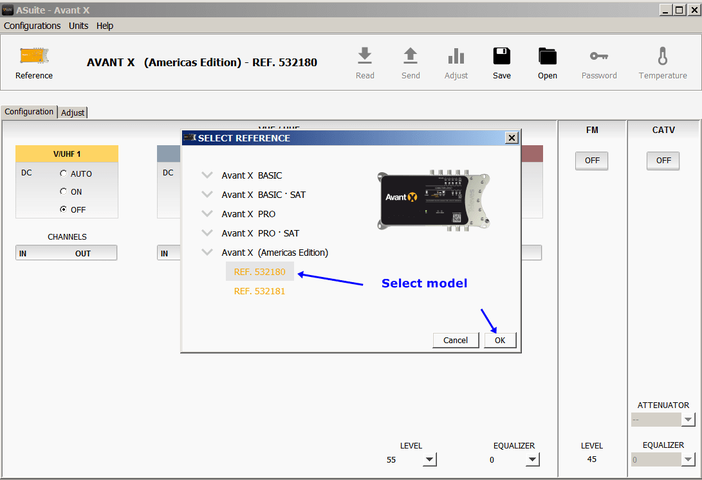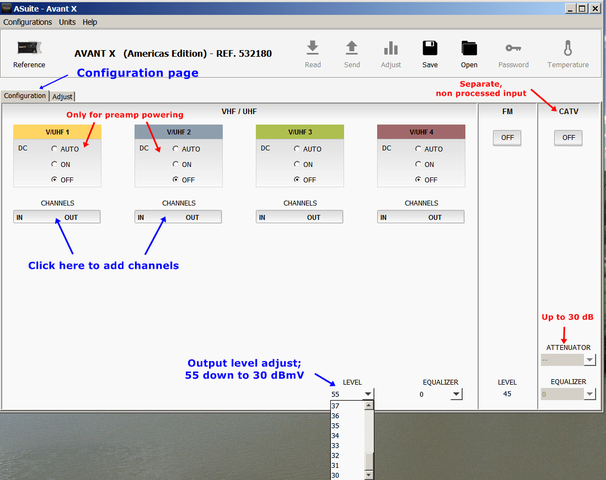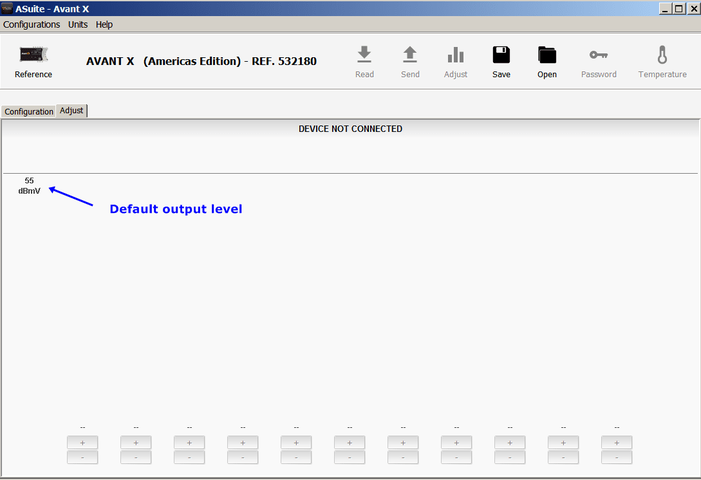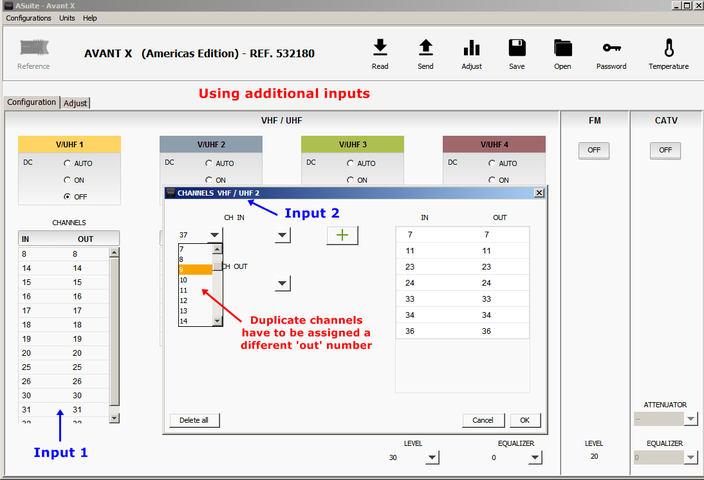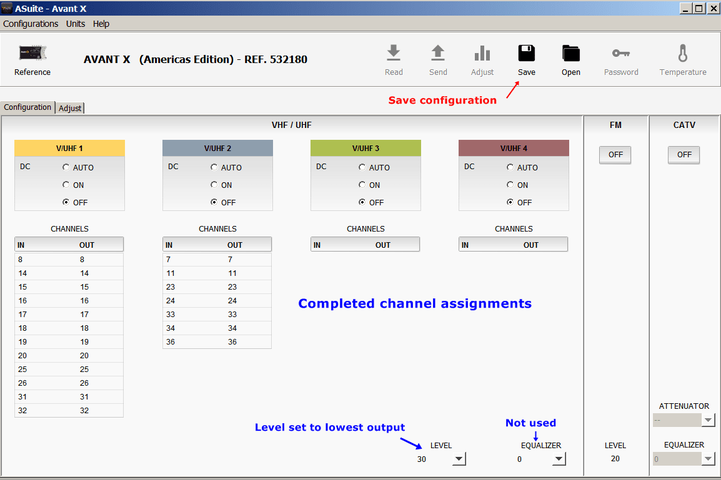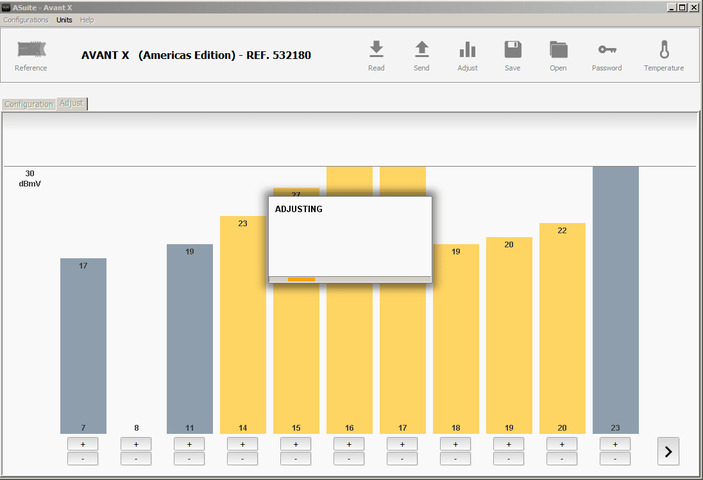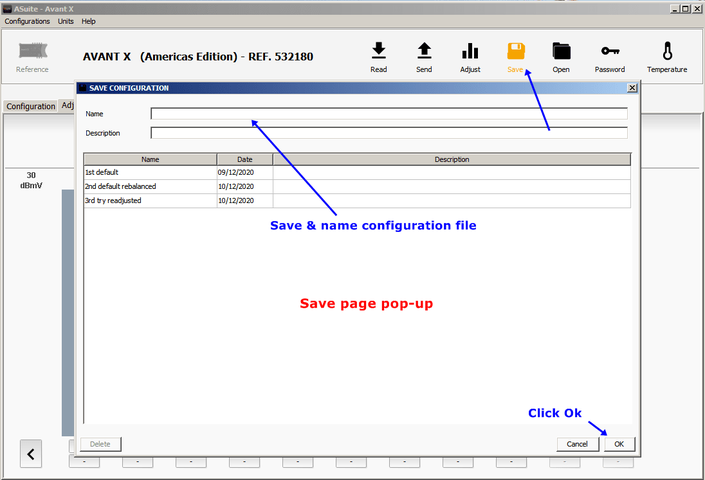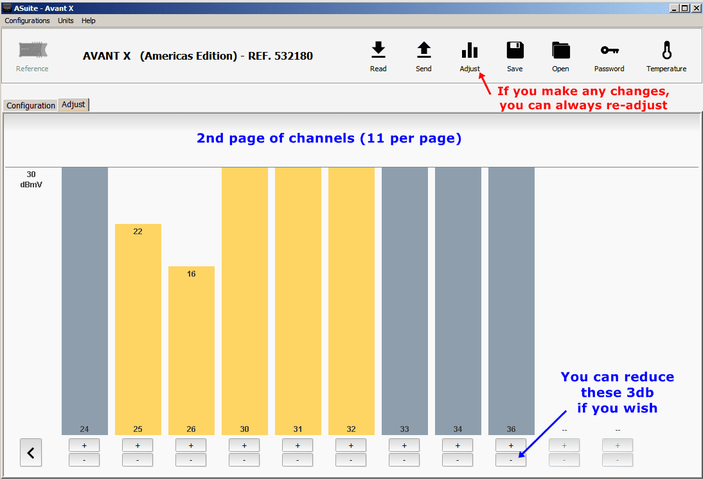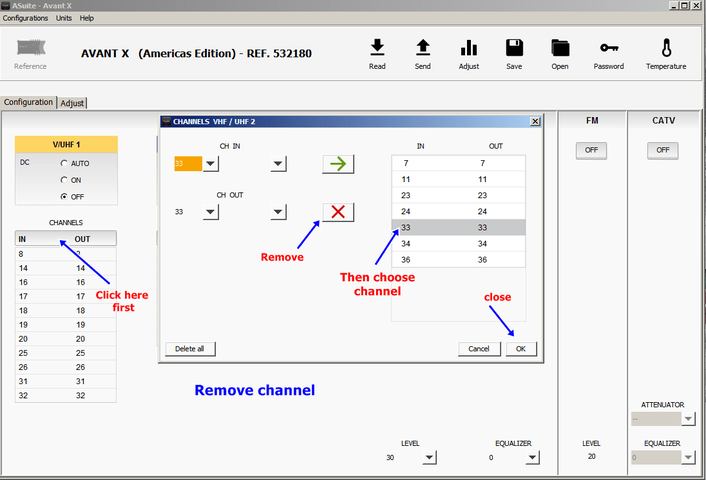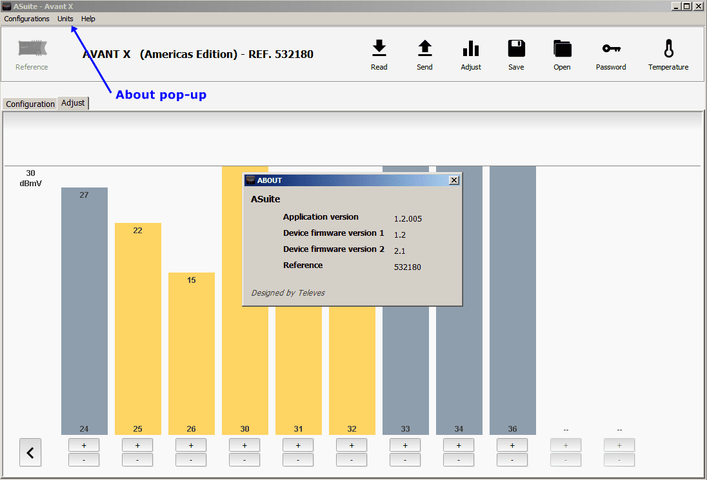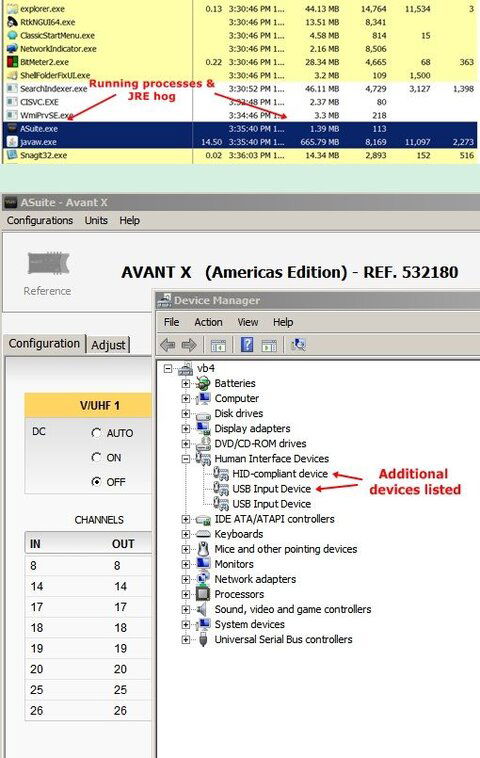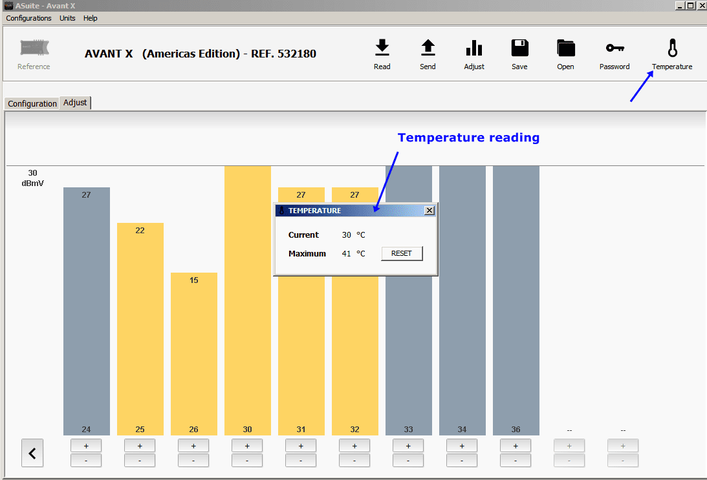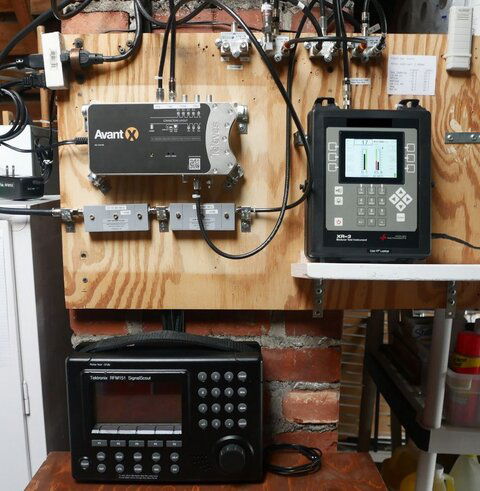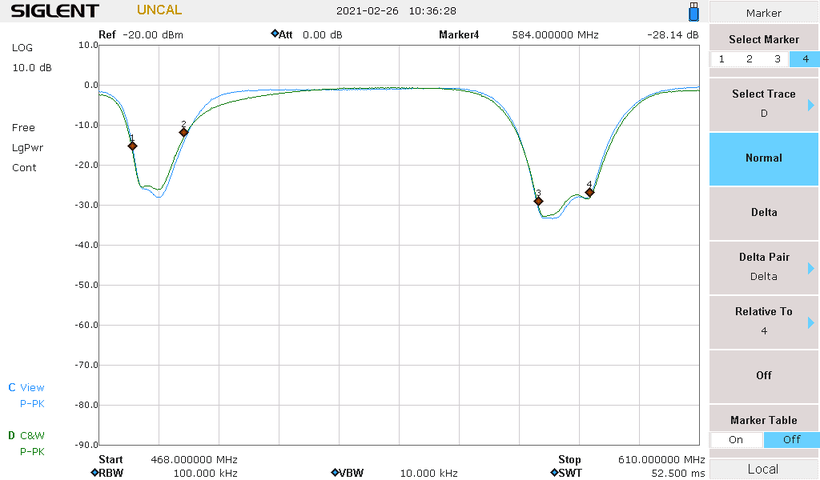I've been working with Televes, both here in Aurora Colorado and in Santiago, Spain as to my situation which is unique to them also.
Simply put, I have stations from 7 and 55 miles away in basically the same compass direction with a difference of 40db which even with channel traps, the problem is still there.
Their Avant-X device which I bought from Ness Electronics whom I recommend very highly, seems to be a possible solution.
Televes (US);
AVANT X programmable multiband amplifier for terrestrial signals, with AutoLTE
Ness Electronics;
Televes Avant X 532180 Multiband amplifier
ASuite software;
https://www.televes.com/us/software?busca=asuite
That requires Java RE v1.7.0 either x86 or x64 v1.7.0.51 from January 2014 actual version
Installed program reports to be 118MB. Actual folder is 139MB
64bit;
Java Runtime Environment (64-bit)
32bit;
Java Runtime Environment (32-bit)
It's surely not for everyone. One needs to know their reception area well, not just where everything is, but just what the signal strengths are. You won't know that by some 'lame' indicator on a TV or outboard tuner/DVR. But, that is another topic.
From two separate documents from Televes, below is a list of features and a brief configuration;
-------------------------------------------------------------------------------------------------------------------------------------------------------------------------------
Features:
Digital processing implemented on terrestrial TV signals
Up to 32 individually programmable filters: single channel digital filtering, adjacent channels (1 to 4 channels)
Output channels can be frequency shifted to any unassigned channel included other bands
Output level is adjustable between 30-55dBmV. Equalization slope up to 8 dB can be programmed at the output.
Automatic signal adjustment in each filter (AGC): and output signal manual regulation (+- 3db)
Digital filters with high selectivity: 30dB rejection (@ 1MHz)
AutoLTE: automatic adaptation of filters, depending on the LTE signal type (CH36/CH51)
CATV input range; 54-1220MHz equalization between 0-18dB. The output level is 55dBmV.
SAW filters (Surface Acoustic Wave) against LTE interference, with the best selectivity and stability
TForce Technology: terrestrial signal level always stable and adapted to its optimum value
Storage multiple setup configurations, allows user to transfer data to other AVANT X units
Zamak chassis provides high RF shielding
Configuration and adjustment using ASuite application for Windows or Android.
Powering of preamps or BOSS (antenna) system
LED indicators displaying power and adjustment status
Easy-to-replace proprietary power supply
FM input when enabled, will be amplified and its output level set to 10 dB below the lowest-level UHF channel (taking into account the equalization slope).
Filters can be tuned to any VHF & UHF channel, its bandwidth can comprise between 1 to 4 channels. The arrangement of the 32 filters is configurable based on the number of channels present on each TV input
ASuite for PC or tablet and Android smartphone, via USB connection (Micro B cable included): A configuration can be defined and stored even without being connected to the multiband amplifier to retrieve it later.
The READJUST button on the unit (short press), will readjust the stored configuration values. A manual adjustment can be performed to the gain +/- 3db in the software.
Configuration and adjustment
Through the PCT programmer unit: select the appropriate parameters for the installation (channels, output level, equalization slope…) and press the ∎ button (long press) which saves the configuration and starts the setting. If programming is done before installation, with the removal of the programmer the process is avoided but the configuration is recorded for later adjustment..
Through the "READJUST" button starts the process of setting the unit with the configuration previously stored by the programmer or the application.
Inputs and outputs must be active for the correct setting of the unit.
During the adjustment process, the green LED remains ON and in case of a level error the red LED will light up.
IMPORTANT WARNING: The Avant X unit ships with a 75 ohm terminator load connected to the TV+CATV output. It is important to make sure that this load remains connected to the TV+CATV output during the adjustment process. The Avant X adjusts the gain of the filters by measuring the level detected at the main TV+CATV output and it needs to be loaded for the reading to be accurate. If the TV+CATV output is not terminated during the adjustment process, mismatches would occur and the results of the adjustment will not be satisfactory.
If the adjustment screen shows any bars falling short of the desired programmed in one or several programmed filters, that's indicative of the corresponding input RF signal being lower than the minimum input value required (-20 dBmV ). In this case, it can not be guaranteed they will function properly through the Avant X and these channels may be impaired with errors.
-------------------------------------------------------------------------------------------------------------------------------------------------------------

Simply put, I have stations from 7 and 55 miles away in basically the same compass direction with a difference of 40db which even with channel traps, the problem is still there.
Their Avant-X device which I bought from Ness Electronics whom I recommend very highly, seems to be a possible solution.
Televes (US);
AVANT X programmable multiband amplifier for terrestrial signals, with AutoLTE
Ness Electronics;
Televes Avant X 532180 Multiband amplifier
ASuite software;
https://www.televes.com/us/software?busca=asuite
That requires Java RE v1.7.0 either x86 or x64 v1.7.0.51 from January 2014 actual version
Installed program reports to be 118MB. Actual folder is 139MB
64bit;
Java Runtime Environment (64-bit)
32bit;
Java Runtime Environment (32-bit)
It's surely not for everyone. One needs to know their reception area well, not just where everything is, but just what the signal strengths are. You won't know that by some 'lame' indicator on a TV or outboard tuner/DVR. But, that is another topic.
From two separate documents from Televes, below is a list of features and a brief configuration;
-------------------------------------------------------------------------------------------------------------------------------------------------------------------------------
Features:
Digital processing implemented on terrestrial TV signals
Up to 32 individually programmable filters: single channel digital filtering, adjacent channels (1 to 4 channels)
Output channels can be frequency shifted to any unassigned channel included other bands
Output level is adjustable between 30-55dBmV. Equalization slope up to 8 dB can be programmed at the output.
Automatic signal adjustment in each filter (AGC): and output signal manual regulation (+- 3db)
Digital filters with high selectivity: 30dB rejection (@ 1MHz)
AutoLTE: automatic adaptation of filters, depending on the LTE signal type (CH36/CH51)
CATV input range; 54-1220MHz equalization between 0-18dB. The output level is 55dBmV.
SAW filters (Surface Acoustic Wave) against LTE interference, with the best selectivity and stability
TForce Technology: terrestrial signal level always stable and adapted to its optimum value
Storage multiple setup configurations, allows user to transfer data to other AVANT X units
Zamak chassis provides high RF shielding
Configuration and adjustment using ASuite application for Windows or Android.
Powering of preamps or BOSS (antenna) system
LED indicators displaying power and adjustment status
Easy-to-replace proprietary power supply
FM input when enabled, will be amplified and its output level set to 10 dB below the lowest-level UHF channel (taking into account the equalization slope).
Filters can be tuned to any VHF & UHF channel, its bandwidth can comprise between 1 to 4 channels. The arrangement of the 32 filters is configurable based on the number of channels present on each TV input
ASuite for PC or tablet and Android smartphone, via USB connection (Micro B cable included): A configuration can be defined and stored even without being connected to the multiband amplifier to retrieve it later.
The READJUST button on the unit (short press), will readjust the stored configuration values. A manual adjustment can be performed to the gain +/- 3db in the software.
Configuration and adjustment
Through the PCT programmer unit: select the appropriate parameters for the installation (channels, output level, equalization slope…) and press the ∎ button (long press) which saves the configuration and starts the setting. If programming is done before installation, with the removal of the programmer the process is avoided but the configuration is recorded for later adjustment..
Through the "READJUST" button starts the process of setting the unit with the configuration previously stored by the programmer or the application.
Inputs and outputs must be active for the correct setting of the unit.
During the adjustment process, the green LED remains ON and in case of a level error the red LED will light up.
IMPORTANT WARNING: The Avant X unit ships with a 75 ohm terminator load connected to the TV+CATV output. It is important to make sure that this load remains connected to the TV+CATV output during the adjustment process. The Avant X adjusts the gain of the filters by measuring the level detected at the main TV+CATV output and it needs to be loaded for the reading to be accurate. If the TV+CATV output is not terminated during the adjustment process, mismatches would occur and the results of the adjustment will not be satisfactory.
If the adjustment screen shows any bars falling short of the desired programmed in one or several programmed filters, that's indicative of the corresponding input RF signal being lower than the minimum input value required (-20 dBmV ). In this case, it can not be guaranteed they will function properly through the Avant X and these channels may be impaired with errors.
-------------------------------------------------------------------------------------------------------------------------------------------------------------



